Plastic Anisotropy Effect on Variation of Mechanical and Structural Properties of VT23 Titanium Alloy Subjected to Impact-Oscillatory Loading
Abstract
:1. Introduction
- -
- The hazardous nature of additional impulse loads when applied to load-bearing structures during operation, as their mechanical properties can deteriorate significantly;
- -
- The possibility of developing a technology for improving the mechanical properties of the source material using a simple operation of preliminary introduction of impulse energy in a given intensity range.
2. Materials and Methods
3. Results
3.1. Mechanical Properties
3.2. Fractographic Research Results
4. Discussion
5. Conclusions
Author Contributions
Funding
Institutional Review Board Statement
Informed Consent Statement
Data Availability Statement
Acknowledgments
Conflicts of Interest
References
- Khanna, N.; Davim, J.P. Design-of-experiments application in machining titanium alloys for aerospace structural components. Meas. J. Int. Meas. Confed. 2015, 61, 280–290. [Google Scholar] [CrossRef]
- Peters, M.; Kumpfert, J.; Ward, C.H.; Leyens, C. Titanium alloys for aerospace applications. Adv. Eng. Mater. 2003, 5, 419–427. [Google Scholar] [CrossRef]
- Brewer, W.D.; Bird, R.K.; Wallace, T.A. Titanium alloys and processing for high speed aircraft. Mater. Sci. Eng. A 1998, 243, 299–304. [Google Scholar] [CrossRef]
- Gladkovskii, S.V.; Volkov, V.P.; Salikhyanov, D.R.; Veselova, V.E.; Patselov, A.M. Rheological Behavior of a VT23 Alloy during Deformation in a Wide Temperature Range. Russ. Metall. 2020, 2020, 1147–1150. [Google Scholar] [CrossRef]
- Kalashnikov, K.N.; Chumaevskii, A.V.; Kalashnikova, T.A.; Osipovich, K.S.; Kolubaev, E.A. Defect Formation in Titanium Alloy during Non-stationary Process of Local Metallurgy. Russ. Phys. J. 2020, 63, 962–967. [Google Scholar] [CrossRef]
- Babaréko, A.A.; Égiz, I.V.; Khorev, A.I.; Martynova, M.M.; Samarin, E.B. Superplasticity of titanium alloys of different classes. Met. Sci. Heat Treat. 1995, 37, 251–256. [Google Scholar] [CrossRef]
- Polyanskii, V.M.; Klyatskina, V.Y.; Silis, M.I. Evaluation of the brittleness of titanium alloys in terms of mechanical properties and fracture patterns. Met. Sci. Heat Treat. 2003, 45, 61–64. [Google Scholar] [CrossRef]
- Khorev, A.T.; Babaréko, A.A.; Krasnozhon, A.I.; Betsofen, S.Y. Effect of structure, substructure, and crystallographic texture on the mechanical properties of titanium alloys. Met. Sci. Heat Treat. 1982, 24, 463–467. [Google Scholar] [CrossRef]
- Zhao, Q.; Sun, Q.; Xin, S.; Chen, Y.; Wu, C.; Wang, H.; Xu, J.; Wan, M.; Zeng, W.; Zhao, Y. High-strength titanium alloys for aerospace engineering applications: A review on melting-forging process. Mater. Sci. Eng. A 2022, 845, 143260. [Google Scholar] [CrossRef]
- Xin, C.; Wang, Q.; Ren, J.; Zhang, Y.; Wu, J.; Chen, J.; Zhang, L.; Sang, B.; Li, L. Plastic deformation mechanism and slip transmission behavior of commercially pure Ti during in situ tensile deformation. Metals 2022, 12, 721. [Google Scholar] [CrossRef]
- Zhang, S.; Zeng, W.; Zhao, Q.; Ge, L.; Zhang, M. In situ SEM study of tensile deformation of a near-β titanium alloy. Mater. Sci. Eng. A 2017, 708, 574–581. [Google Scholar] [CrossRef]
- Guan, B.; Xin, Y.; Huang, X.; Liu, C.; Wu, P.; Liu, Q. The mechanism for an orientation dependence of grain boundary strengthening in pure titanium. Int. J. Plast. 2022, 153, 103276. [Google Scholar] [CrossRef]
- Xu, S.; Zhou, P.; Liu, G.; Xiao, D.; Gong, M.; Wang, J. Shock-induced two types of {101 2} sequential twinning in Titanium. Acta Mater. 2019, 165, 547–560. [Google Scholar] [CrossRef]
- Wang, L.; Zheng, Z.; Phukan, H.; Kenesei, P.; Park, J.-S.; Lind, J.; Suter, R.; Bieler, T. Direct measurement of critical resolved shear stress of prismatic and basal slip in polycrystalline Ti using high energy X-ray diffraction microscopy. Acta Mater. 2017, 132, 598–610. [Google Scholar] [CrossRef]
- Zhang, Z.; Zhang, P.; Li, L. Fatigue cracking at twin boundaries: Effects of crystallographic orientation and stacking fault energy. Acta Mater. 2012, 60, 3113–3127. [Google Scholar] [CrossRef]
- Luster, J.; Morris, J.M. Compatibility of deformation in two-phase Ti-Al alloys: Dependence on microstructure and orientation relationships. Metall. Mat. Trans. A 1995, 26, 1745–1756. [Google Scholar] [CrossRef]
- Wang, B.; Liu, H.; Zhang, Y.; Zhou, B.; Deng, L.; Wang, C.; Chen, J.; Zhang, Y. Effect of grain size on twinning behavior of pure titanium at room temperature. Mater. Sci. Eng. A 2021, 827, 142060. [Google Scholar] [CrossRef]
- Emelianova, E.; Pisareva, M.; Zinovieva, O.; Romanova, V. The effect of texture sharpness on deformation-induced surface roughening in α-titanium. Procedia Struct. Integr. 2022, 35, 203–209. [Google Scholar] [CrossRef]
- Won, J.W.; Park, K.-T.; Hong, S.-G.; Lee, C.S. Anisotropic yielding behavior of rolling textured high purity titanium. Mater. Sci. Eng. A 2015, 637, 215–221. [Google Scholar] [CrossRef]
- Wu, X.; Kalidindi, S.; Necker, C.; Salem, A. Prediction of Crystallographic texture evolution and anisotropic stress–strain сurves during large plastic strains in high purity α-titanium using a Taylor-type crystal plasticity model. Acta Mater. 2007, 55, 423–443. [Google Scholar] [CrossRef]
- Sahu, V.K.; Yadava, M.; Chakraborty, P.; Gurao, N.P. Effect of notch severity and crystallographic texture on local deformation and damage in commercially pure titanium. Int. J. Plast. 2022, 155, 103318. [Google Scholar] [CrossRef]
- Chouhan, D.K.; Biswas, S. Multiaxial plane-strain forging and rolling of biomedical grade titanium: Evolution of microstructure, texture, and mechanical properties. Mater. Lett. 2021, 291, 129540. [Google Scholar] [CrossRef]
- Verleysen, P.; Peirs, J. Quasi-static and high strain rate fracture behaviour of Ti6Al4V. Int. J. Impact Eng. 2017, 108, 370–388. [Google Scholar] [CrossRef]
- D’yakova, M.A.; L’vova, E.A. Phase transformations in dual-phase titanium alloys during mechanical testing at various temperatures. Met. Sci. Heat Treat. 1988, 30, 205–211. [Google Scholar] [CrossRef]
- Revil-Baudard, B.; Cazacu, O.; Flater, P.; Kleiser, G. Plastic deformation of high-purity α-titanium: Model development and validation using the Taylor cylinder impact test. Mech. Mater. 2015, 80, 264–275. [Google Scholar] [CrossRef]
- Głowacki, D.; Moćko, W.; Marczak, M.; Głowacka, A.; Kraśkiewicz, C. Energy absorbing properties analysis of layers structure of titanium alloy Ti6Al4V during dynamic impact loading tests. Materials 2021, 14, 7209. [Google Scholar] [CrossRef]
- Cao, J.; Li, F.; Ma, W.; Li, D.; Wang, K.; Ren, J.; Nie, H.; Dang, W. Constitutive equation for describing true stress–strain curves over a large range of strains. Philos. Mag. Lett. 2020, 100, 476–485. [Google Scholar] [CrossRef]
- Chausov, M.; Pylypenko, A.; Berezin, V.; Volyanska, K.; Maruschak, P.; Hutsaylyuk, V.; Markashova, L.; Nedoseka, S.; Menou, A. Influence of dynamic non-equilibrium processes on strength and plasticity of materials of transportation systems. Transport 2018, 33, 231–241. [Google Scholar] [CrossRef]
- Zasimchuk, E.; Turchak, T.; Chausov, N. Hydrodynamic plastic flow in metal materials. Results Mater. 2020, 226, 100090. [Google Scholar] [CrossRef]
- Chausov, N.G.; Voityuk, D.G.; Pilipenko, A.P.; Kuz’menko, A.M. Setup for testing materials with plotting complete stress–strain diagrams. Strength Mater. 2004, 36, 532–537. [Google Scholar] [CrossRef]
- Chausov, N.G.; Pilipenko, A.P. Influence of dynamic overloading on fracture kinetics of metals at the final stages of deformation. Mechanika 2004, 48, 13–18. [Google Scholar]
- Chausov, M.G.; Berezin, V.B.; Pylypenko, A.P.; Hutsaylyuk, V.B. Strain field evolution on the surface of aluminum sheet alloys exposed to specific impact with oscillation loading. J. Strain. Anal. 2014, 50, 61–62. [Google Scholar] [CrossRef]
- Chausov, M.; Hutsaylyuk, V.; Sniezek, L.; Sobchak, A.; Pylypenko, A. Strain field evolution on the surface of stainless sheet steel 12Cr17 exprosed to a specific impact with oscillation loading. In Proceedings of the 11th International Conference on Intelligent Technologies in Logistics and Mechatronics Systems, Panevėžys, Lithuania, 28–29 April 2016; 47–52. [Google Scholar]
- Turchak, T.; Chausov, N.; Hutsaylyuk, V.; Berezin, V. Influence of combined loading on microstructure and properties of aluminum alloy 2024-T3. J. Mater. Eng Perform 2013, 22, 3421–3429. [Google Scholar] [CrossRef]
- Chausov, M.G.; Maruschak, P.O.; Hutsaylyuk, V.; Sniezek, L.; Pylypenko, A.P. Effect of complex combined loading mode on the fracture toughness of titanium alloys. Vacuum 2018, 147, 51–57. [Google Scholar] [CrossRef]
- Chausov, M.; Brezinová, J.; Pylypenko, A.; Maruschak, P.; Titova, L.; Guzanová, A. Modification of mechanical properties of high-strength titanium alloys VT23 and VT23M due to impact-oscillatory loading. Metals 2019, 9, 80. [Google Scholar] [CrossRef]
- Konovalenko, I.; Maruschak, P.; Brezinová, J.; Brezina, J. Morphological characteristics of dimples of ductile fracture of VT23M titanium alloy and identification of dimples on fractograms of different scale. Materials 2019, 12, 2051. [Google Scholar] [CrossRef]
- Konovalenko, I.; Maruschak, P.; Prentkovskis, O.; Junevičius, R. Investigation of the rupture surface of the titanium alloy using convolutional neural networks. Materials 2018, 11, 2467. [Google Scholar] [CrossRef]
- Konovalenko, I.; Maruschak, P.; Prentkovskis, O. Automated method for fractographic analysis of shape and size of dimples on fracture surface of high-strength titanium alloys. Metals 2018, 8, 161. [Google Scholar] [CrossRef]
- Chausov, M.G.; Pylypenko, A.P.; Maruschak, P.O. A Method for the Improvement of Plastic Properties of Sheet Two-Phase High-Strength Titanium Alloys Caused by Impact-Oscillatory Loading: Scientific and Methodical Recommendations for the Ukrainian Plants for the Design of Production of Agricultural Equipment; FOP V.A. Palyanytsya: Ternopil, Ukraine, 2017; p. 48. Available online: http://elartu.tntu.edu.ua/handle/lib/22618 (accessed on 24 July 2022). (In Ukrainian)
- Sun, L.; Xu, Z.; Peng, L.; Lai, X. Grain-size-dependent ductile-to-brittle fracture mechanism of titanium sheets. Scr. Mater. 2022, 219, 114877. [Google Scholar] [CrossRef]
- Chausov, M.G.; Pylypenko, A.P.; Berezin, V.B.; Markashova, L.I.; Kushnariova, O.S.; Hutsaylyuk, V.B. Influence of impact-oscillatory loading upon the mechanical properties of the VT-22 titanium alloy sheet. Mater. Eng. Perfom 2016, 25, 3482–3492. [Google Scholar] [CrossRef]
- Maruschak, P.O.; Chausov, M.G.; Konovalenko, I.V.; Yasnii, O.P.; Panin, S.V.; Vlasov, I.V. Effect of shock and vibration loading on the fracture mechanisms of a VT23 titanium alloy. Strength Mater. 2020, 52, 252–261. [Google Scholar] [CrossRef]
- Khorev, A.I. High-strength titanium alloy VT23 and its applications in advanced welded and brazed structures. Weld. Int. 2010, 24, 276–281. [Google Scholar] [CrossRef]
- Khorev, A.I. Alloying and heat treatment of structural (α + β) titanium alloys of high and superhigh strength. Russ. Engin. Res. 2010, 30, 682–688. [Google Scholar] [CrossRef]
- Vodolazskiy, F.V.; Illarionov, A.G.; Shirinkina, N.A. Microstructure, phase composition, physical and mechanical properties of titanium alloy VT23 hot-extruded tube. Defect Diffus. Forum 2021, 410, 324–329. [Google Scholar] [CrossRef]
- Bryukhanov, A.A.; Ivanii, V.S.; Vasyliv, A.I.; Moroz, I.A. Recrystallization texture and anisotropy of the properties of cold rolled α titanium. Met. Sci. Heat Treat. 1977, 19, 500–502. [Google Scholar] [CrossRef]
- Bryukhanov, A.A.; Gokhman, A.R. Orientation distribution function of texturized sheet stock in hexagonal alpha-titanium. Russ. Metall. Met. 1985, 5, 140–144. [Google Scholar]
- Zakharchenko, I.G.; Gokhman, A.R.; Bryukhanov, A.A.; Mikhajlivskij, Y.G. Orientation dependence of the mechanical properties of textured Ti-3 Al-1.5 V alloy sheets. Fiz. Met. I Metalloved. 1993, 76, 164–169. [Google Scholar]
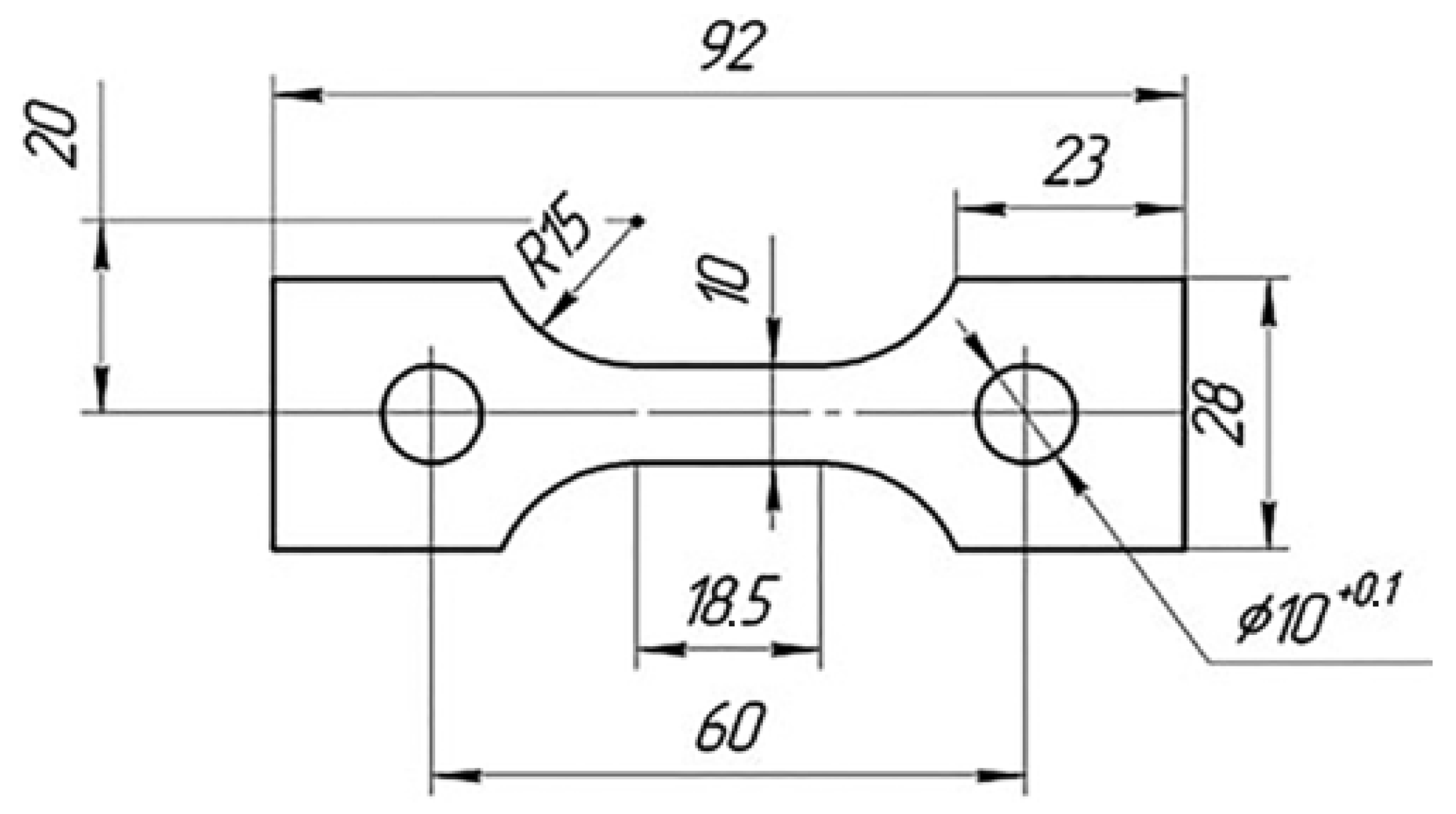
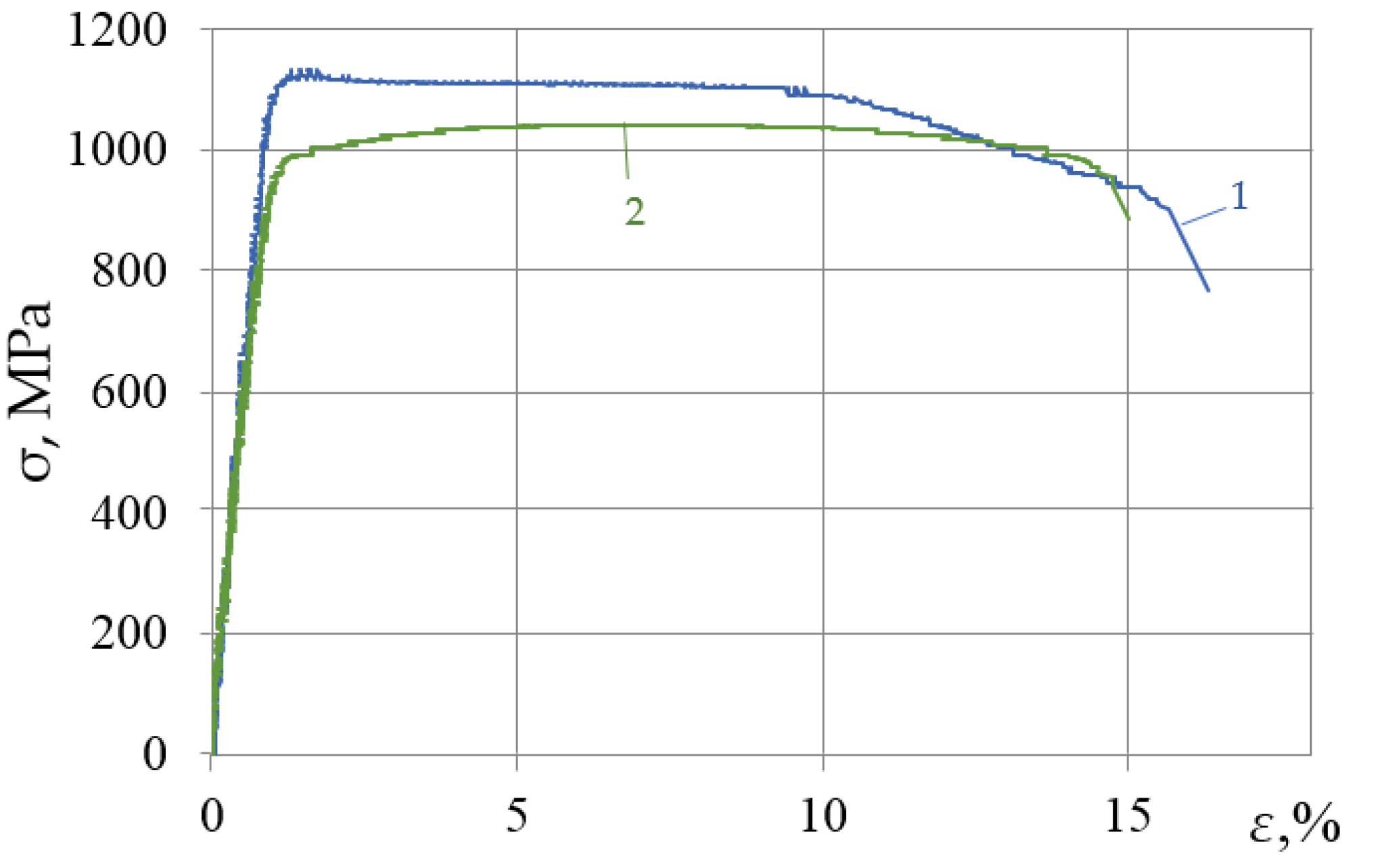
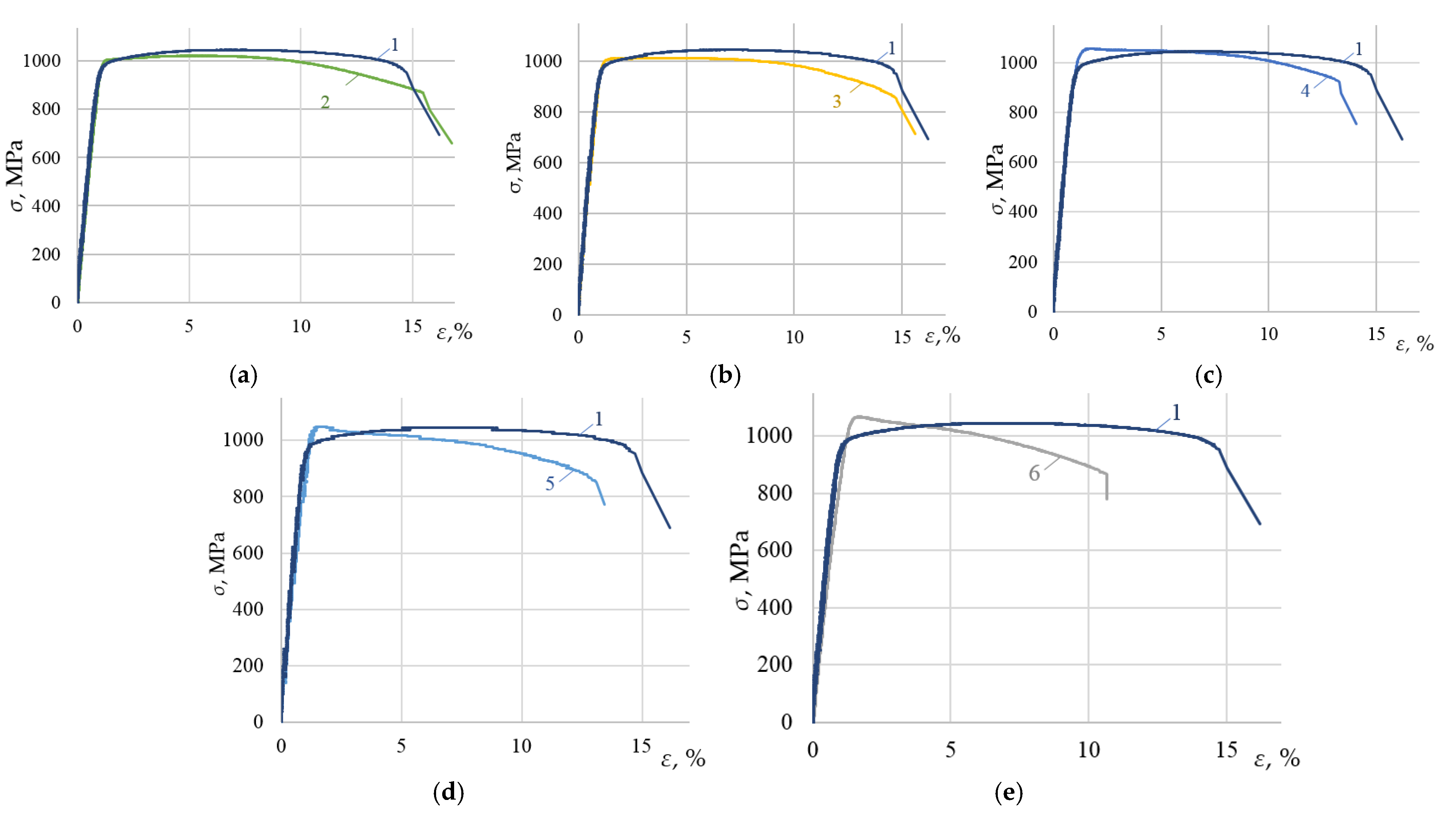

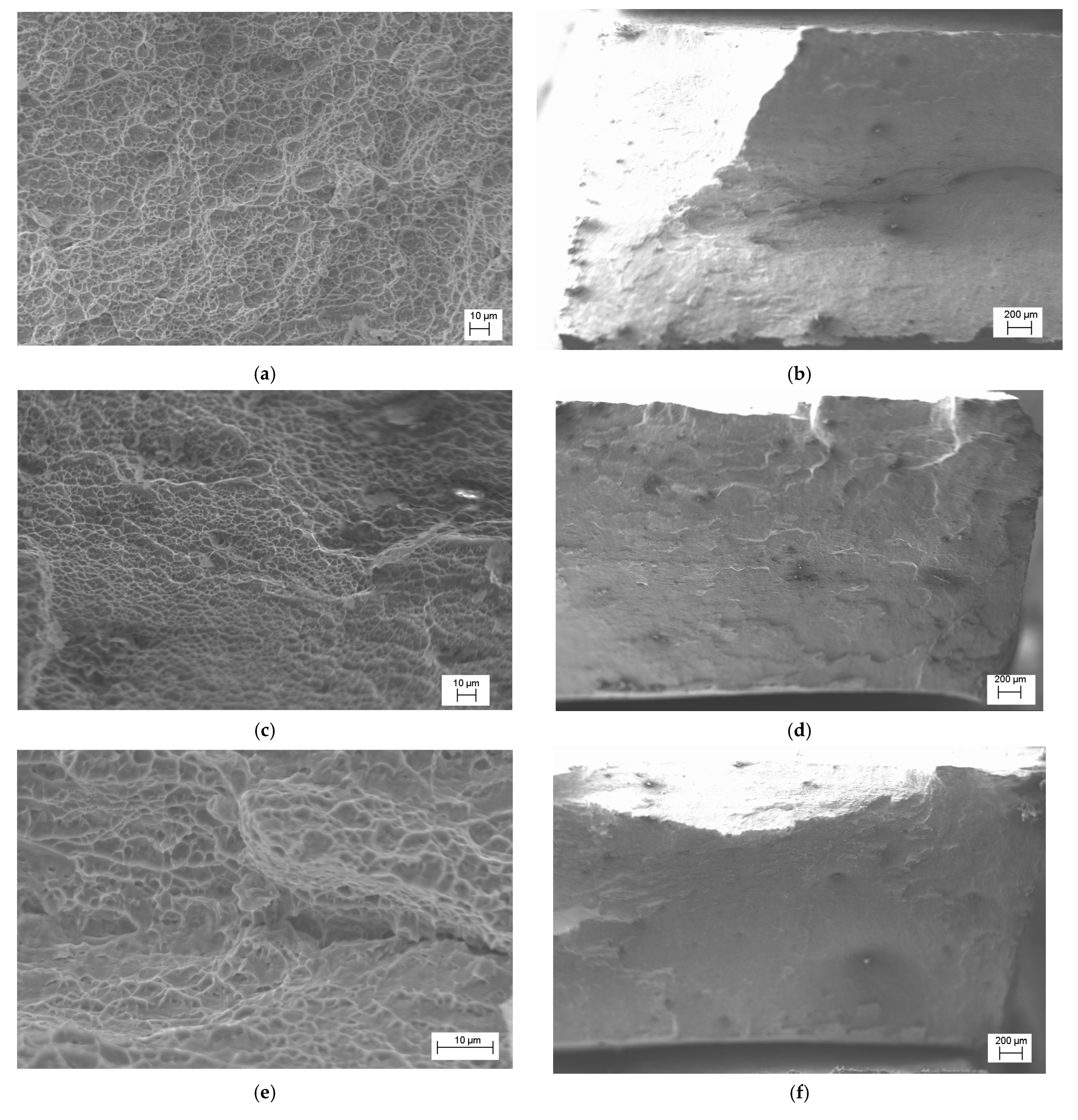
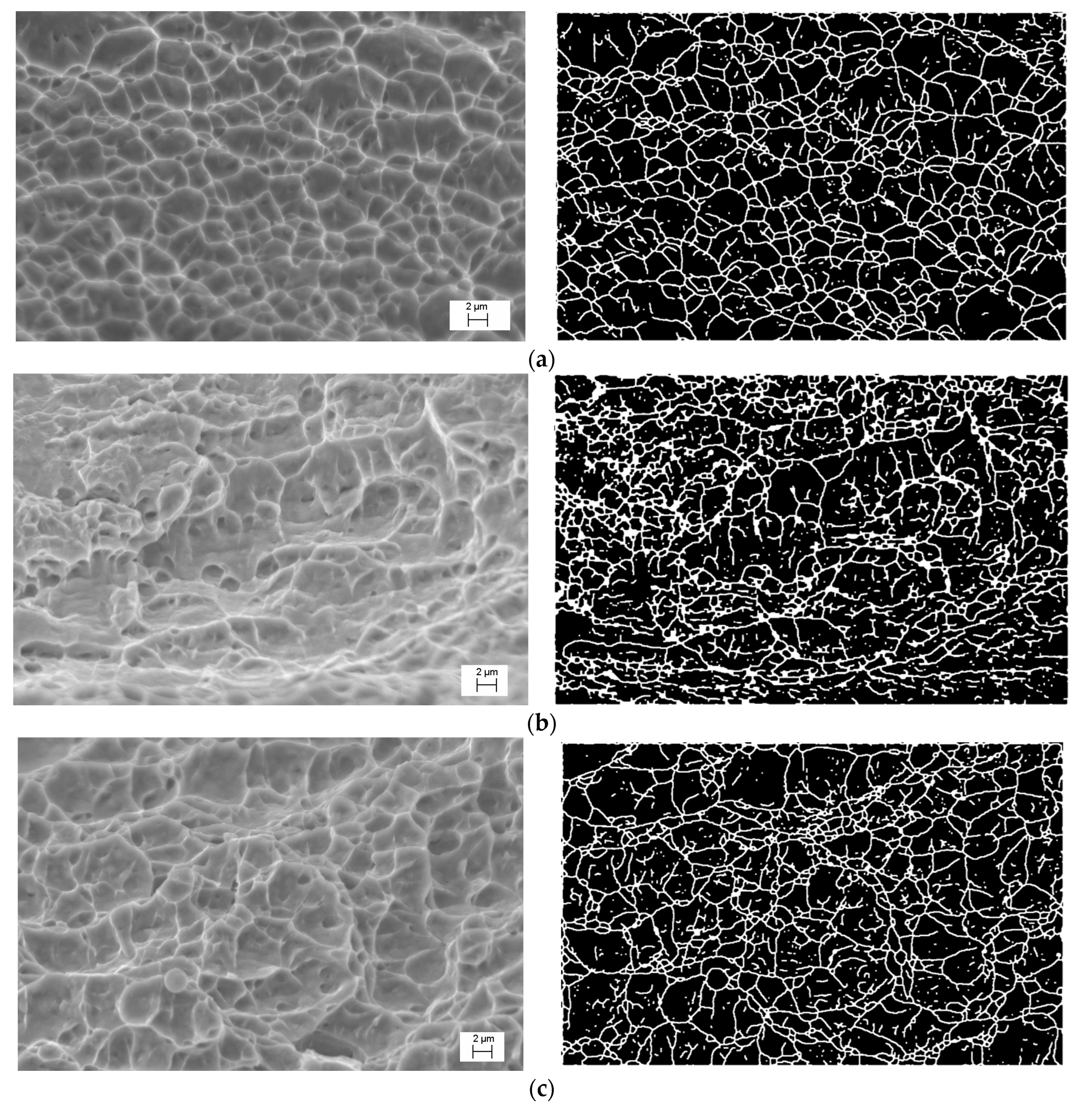
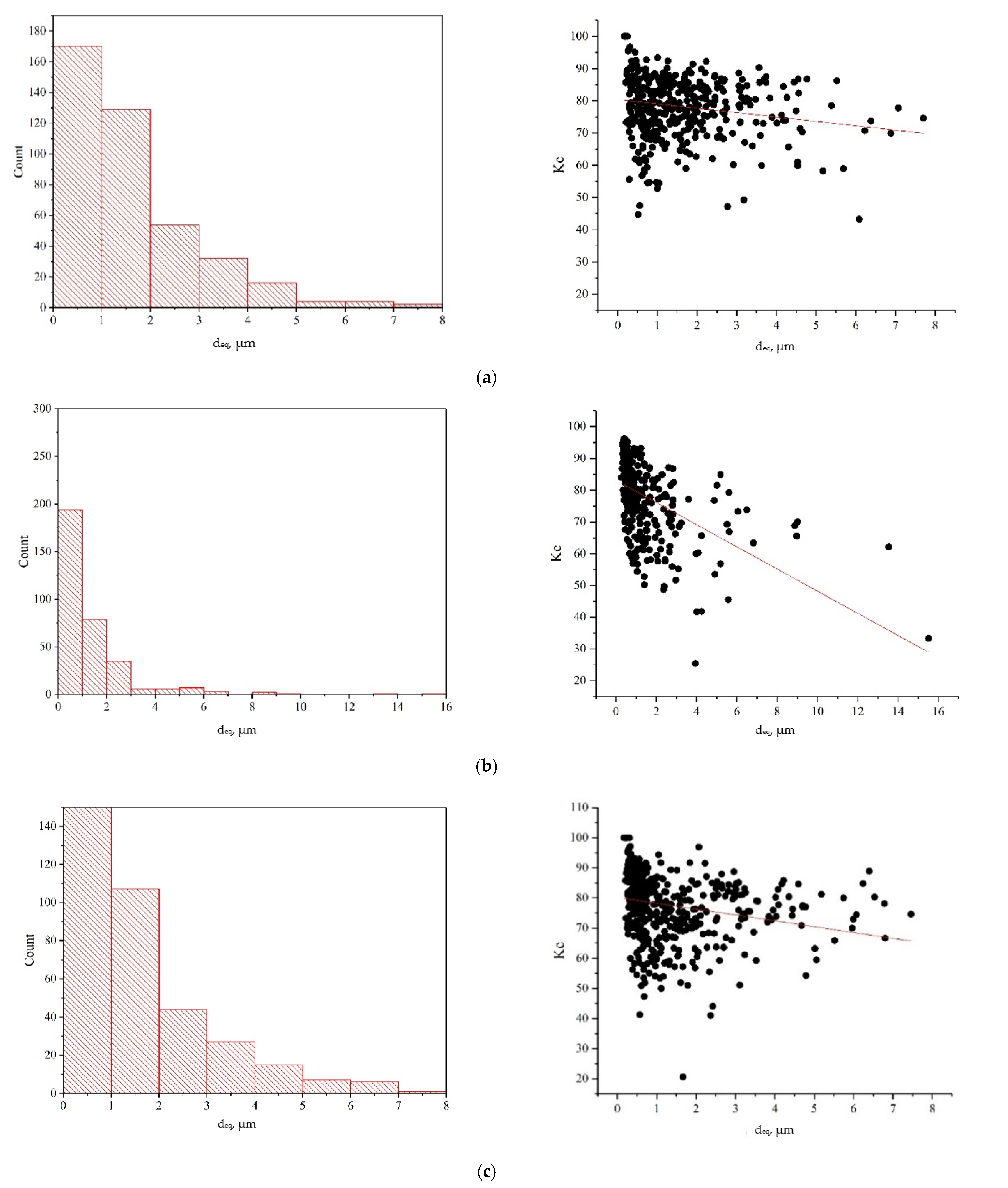

| Rolling Direction | Mechanical Properties | ||
|---|---|---|---|
| σys, MPa | σus, MPa | δ, % | |
| longitudinal | 1060–1080 | 1120–1180 | 16 |
| transverse | 960–980 | 1040–1080 | 15 |
| Fe | Cr | Mo | V | Ti | Al |
|---|---|---|---|---|---|
| 0.5–0.8 | 1.0–1.4 | 1.8–2.5 | 4.3–5 | 86–89.3 | 4.4–6.3 |
Publisher’s Note: MDPI stays neutral with regard to jurisdictional claims in published maps and institutional affiliations. |
© 2022 by the authors. Licensee MDPI, Basel, Switzerland. This article is an open access article distributed under the terms and conditions of the Creative Commons Attribution (CC BY) license (https://creativecommons.org/licenses/by/4.0/).
Share and Cite
Chausov, M.; Pylypenko, A.; Maruschak, P.; Brezinová, J.; Brezina, J.; Konovalenko, I. Plastic Anisotropy Effect on Variation of Mechanical and Structural Properties of VT23 Titanium Alloy Subjected to Impact-Oscillatory Loading. Materials 2022, 15, 5718. https://doi.org/10.3390/ma15165718
Chausov M, Pylypenko A, Maruschak P, Brezinová J, Brezina J, Konovalenko I. Plastic Anisotropy Effect on Variation of Mechanical and Structural Properties of VT23 Titanium Alloy Subjected to Impact-Oscillatory Loading. Materials. 2022; 15(16):5718. https://doi.org/10.3390/ma15165718
Chicago/Turabian StyleChausov, Mykola, Andrii Pylypenko, Pavlo Maruschak, Janette Brezinová, Jakub Brezina, and Ihor Konovalenko. 2022. "Plastic Anisotropy Effect on Variation of Mechanical and Structural Properties of VT23 Titanium Alloy Subjected to Impact-Oscillatory Loading" Materials 15, no. 16: 5718. https://doi.org/10.3390/ma15165718
APA StyleChausov, M., Pylypenko, A., Maruschak, P., Brezinová, J., Brezina, J., & Konovalenko, I. (2022). Plastic Anisotropy Effect on Variation of Mechanical and Structural Properties of VT23 Titanium Alloy Subjected to Impact-Oscillatory Loading. Materials, 15(16), 5718. https://doi.org/10.3390/ma15165718








